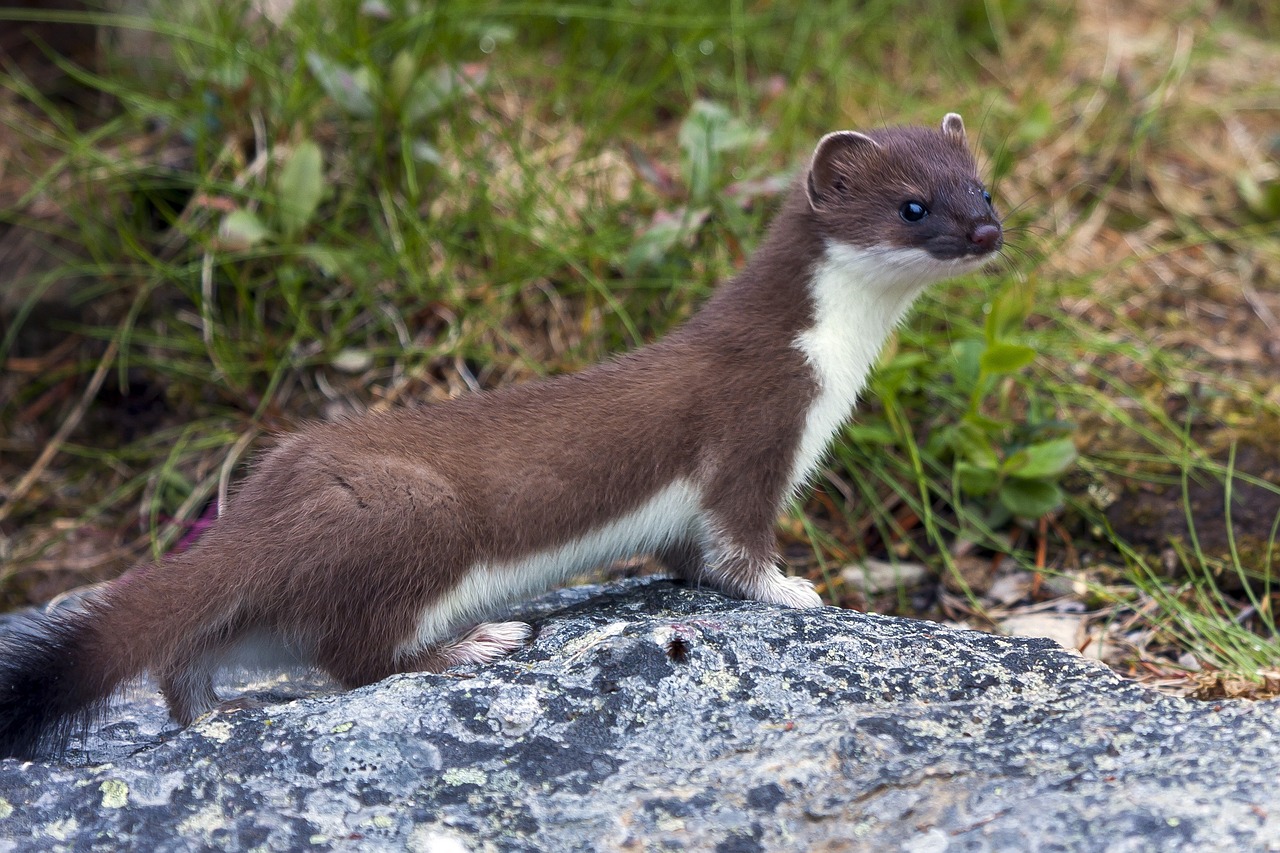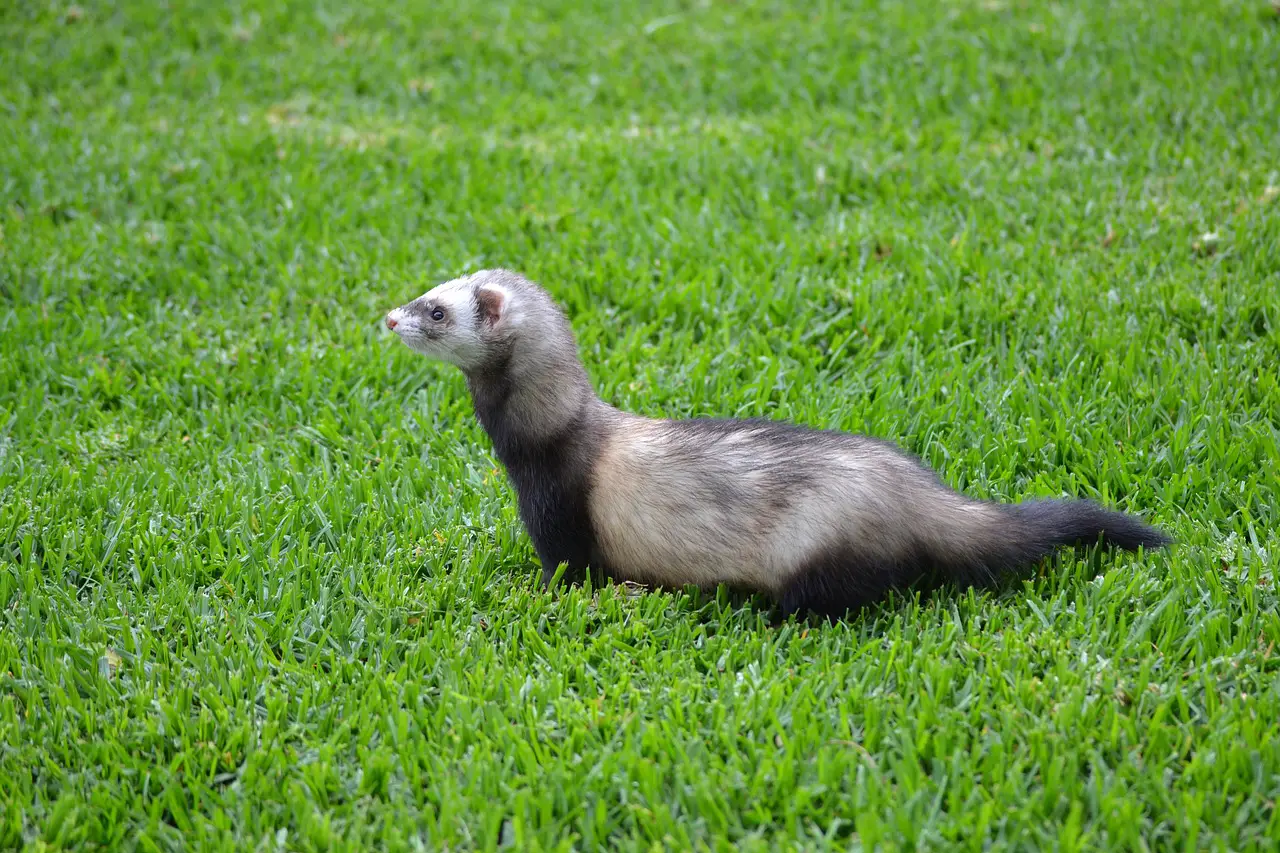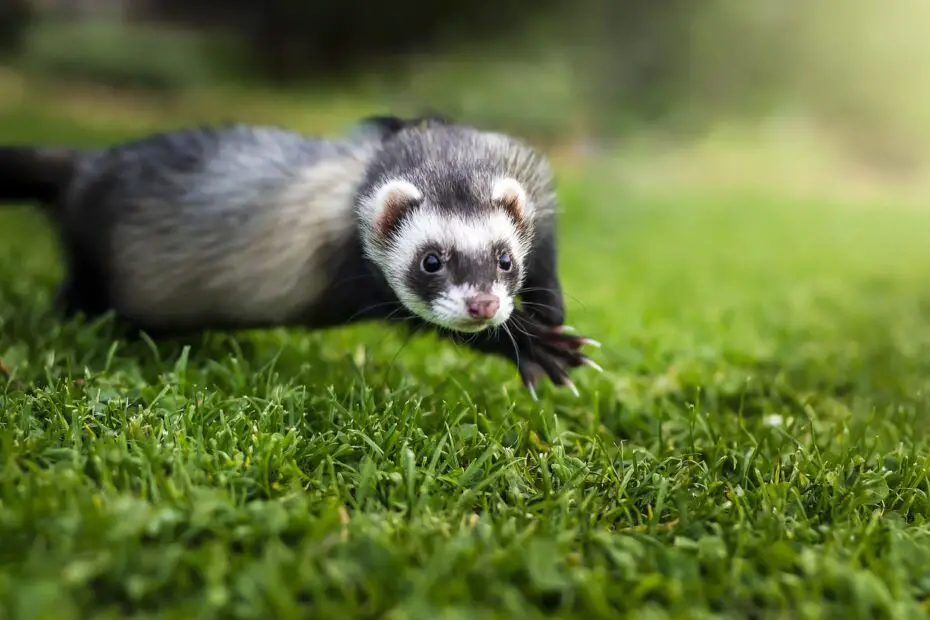1. Introduction
Ferret vs Weasel, what is the difference? Within the diverse family of mustelids, two small and agile creatures stand out – the ferret and the weasel. These elusive mammals, known for their sleek bodies and mischievous nature, often spark curiosity among animal enthusiasts.
In this article, we will embark on a journey to explore the world of ferrets and weasels, unveiling their physical characteristics, habitats, diets, behaviors, and the distinctions that set them apart. Join us as we delve into the captivating realm of these mustelids and uncover the fascinating differences and surprising similarities between ferrets and weasels.
You may also want to read about the lifespan of a ferret.
2. Physical Characteristics
2.1 Ferret
Ferrets possess unique physical traits that make them both adorable and captivating. From their slender bodies and flexible spine to their keen sense of smell, we will dive into the distinct features that define the ferret.
2.2 Weasel
Weasels, with their elongated bodies and slender frames, showcase remarkable physical adaptations. We will explore their agile nature, sharp teeth, and other distinctive characteristics that contribute to their success as predators.

3. Habitat and Range
Ferrets and weasels inhabit diverse environments, each with specific habitat preferences. In this section, we will discuss the varying ranges and habitats that these mustelids call home.
4. Diet and Hunting Strategies
The diet and hunting strategies of ferrets and weasels play a crucial role in their survival. We will delve into their carnivorous nature, preferred prey, and the unique hunting techniques they employ to capture their meals.
5. Behavior and Social Structure
Understanding the behavior and social structure of ferrets and weasels provides insights into their fascinating lives. We will explore their solitary tendencies, territorial behaviors, and how they communicate with each other.
6. Domestication and Pet Ownership
Ferrets have a long history of domestication, and their popularity as pets has grown over the years. We will delve into the process of domestication, the characteristics that make ferrets suitable as pets, and the responsibilities of ferret owners.
7. Ferret vs Weasel: Differences and Similarities
In this section, we will compare and contrast the distinguishing features, habitat preferences, dietary habits, and behaviors of ferrets and weasels. Let’s explore the differences and surprising similarities between these two closely related mustelids.
7.1 Physical Differences
Ferrets and weasels exhibit notable physical differences that set them apart. We will discuss variations in size, coloration, body shape, and other distinct physical features between these mustelids.
7.2 Habitat Differences
Ferrets and weasels have different habitat preferences due to their unique ecological requirements. We will explore the varying landscapes and environmental conditions that these mustelids inhabit.

7.3 Diet Differences
While both ferrets and weasels are carnivorous, their dietary preferences differ based on their habitats and available prey. We will examine the variations in their diets and hunting strategies.
7.4 Behavioral Differences
Ferrets and weasels display distinct behaviors influenced by their evolutionary adaptations and ecological roles. We will uncover the behavioral disparities, including hunting techniques, communication, and territorial behaviors.
8. Conclusion
The world of mustelids is filled with fascinating creatures, and the ferret and weasel are no exception. While they share a common ancestry and belong to the same family, the ferret and weasel exhibit unique characteristics and adapt to different environments. By understanding the distinctions between these mustelids, we can appreciate their remarkable adaptations and the diversity within the mustelid family.
Frequently Asked Questions (FAQs)
- Can ferrets and weasels be kept as pets?
- Ferrets are commonly kept as pets and have been domesticated for centuries. Weasels, on the other hand, are generally not suitable as pets due to their wild nature and specialized needs.
- Do ferrets and weasels interact with humans in the wild?
- Ferrets and weasels tend to avoid human interactions in the wild and prefer to maintain their distance. They are skilled at remaining elusive and stealthy.
- Are ferrets and weasels related to each other?
- Ferrets and weasels belong to the same family, Mustelidae, which includes various carnivorous mammals. However, they are distinct species with their own characteristics and adaptations.
- Are ferrets and weasels endangered species?
- While some species of ferrets and weasels may be listed as endangered or threatened, the overall conservation status of these mustelids varies depending on the specific species and their respective populations.
- Can ferrets and weasels coexist in the same habitat?
- Ferrets and weasels have overlapping ranges in some regions, but their specific habitat requirements may differ, reducing the chances of direct coexistence in the wild.
